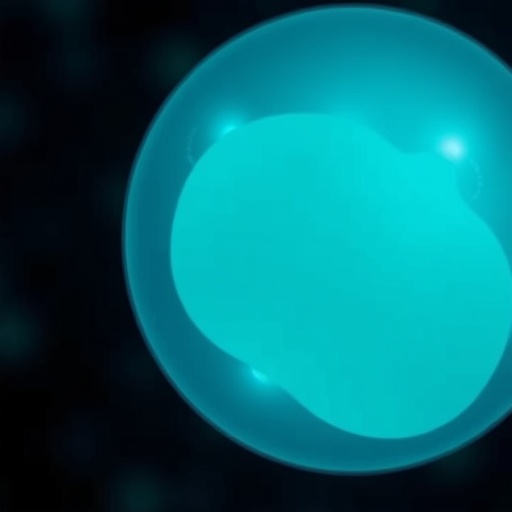A groundbreaking study from the University of Cambridge has unveiled the creation of three-dimensional embryo-like structures derived from human stem cells, which replicate early human developmental processes including the formation of blood stem cells. These novel structures, termed “hematoids,” represent a significant advancement in the ability to model the complex biological events that occur during the initial stages of human embryogenesis, particularly the emergence of hematopoietic stem cells critical for blood formation.
Hematopoietic stem cells (HSCs) are primitive, multipotent cells capable of differentiating into all blood cell types, including oxygen-carrying erythrocytes and the diverse spectrum of immune cells. The hematoids developed in this research self-organize in vitro to mimic embryonic development stages and commence blood production roughly two weeks post-formation, paralleling the timeline observed in natural human embryos. Unlike traditional stem cell cultures requiring external growth factors, hematoids leverage intrinsic cellular interactions to foster both hematopoiesis and cardiogenesis within a unified microenvironment.
In contrast to authentic human embryos, hematoids lack several specialized extra-embryonic tissues, including the yolk sac and placenta, which are indispensable for normative embryonic growth beyond early stages. This limitation confines their development potential, ensuring they cannot mature into a full organism but serve as a highly physiologically relevant model to explore early hematopoietic niches. Such systems hold immense promise for elucidating the molecular and cellular choreography underlying blood lineage specification, as well as for investigating congenital blood disorders such as leukemia in a controlled laboratory context.
The approach to produce hematoids is notable for its potential applicability to personalized medicine. Because these structures are derived from induced pluripotent stem cells (iPSCs) that can be generated from any somatic cell type, patient-specific hematoids could be engineered. This bespoke model system would enable the generation of autologous blood stem cells compatible with individual patients, thereby paving the way for novel regenerative therapies and transplantation strategies that circumvent immune rejection.
Conventional in vitro methods for producing hematopoietic stem cells often rely on administering a cocktail of exogenous cytokines and growth factors to coax stem cells down specified lineages. In contrast, this new research demonstrates that the embryoid’s self-organizing microenvironment naturally orchestrates the differentiation trajectory, supporting both the emergence of beating cardiomyocytes and definitive hematopoietic stem cell populations without extensive biochemical manipulation. This biomimetic model system more faithfully recapitulates the physicochemical and cellular milieu present during human embryogenesis.
Microscopic monitoring revealed that by the second day of culture, hematoids had self-organized into the canonical three germ layers—ectoderm, mesoderm, and endoderm—which are the foundational embryonic tissues giving rise to all human organs and systems, including the vascular and hematologic compartments. By day eight, the appearance of spontaneously beating heart-like cells indicated functional cardiogenesis. Subsequently, by day thirteen, discrete regions containing red blood cells emerged, visually signifying active hematopoiesis within the structure.
The study employed comprehensive techniques to validate that the hematopoietic stem cells generated within hematoids possess multipotent differentiation capabilities. The researchers demonstrated functional differentiation of these progenitors into various blood lineages, including adaptive immune cells such as T lymphocytes, which are central to acquired immunity. This capacity to capture the second wave of hematopoietic development within a singular stem cell-derived platform offers unprecedented opportunities for modeling immune ontogeny and pathologies related to blood and immune function.
Beyond basic biology, hematoids represent a powerful experimental system for drug screening and toxicology assays targeting hematopoietic and cardiovascular development. Since early-stage human embryos are inaccessible for direct study, this ethically compliant stem cell-based model circumvents such limitations, enabling the dissection of key developmental pathways and cellular responses to candidate therapeutics. The research team ensured rigorous adherence to regulatory and ethical standards in the establishment and use of these embryo-like models, gaining approval from oversight committees.
From a regenerative medicine perspective, the capacity to generate hematopoietic stem cells within a self-organizing embryoid may significantly impact treatment of hematological diseases requiring stem cell transplantation. The complexity of producing robust, long-lasting HSCs ex vivo has been a formidable challenge, but the hematoid system’s biomimicry could bridge this translational gap. The work underscores a paradigm shift toward designing culture environments that faithfully emulate in vivo developmental niches, thereby enhancing stem cell quality and functionality for therapeutic purposes.
The potential of hematoids extends to the study of malignant transformation in blood lineages, such as leukemia. By reproducing early hematopoietic microenvironments, researchers can investigate oncogenic processes in a relevant human context, accelerating the discovery of novel interventions and elucidating disease progression mechanisms. This is particularly valuable given the scarcity of suitable human models for early hematopoietic malignancies.
The researchers behind this milestone at the University of Cambridge hold a patent on the hematoid technology, signaling its commercial and clinical potential. Their findings have been published in the esteemed journal Cell Reports, underscoring the scientific rigor and novelty of this work. The interplay between embryonic self-organization and definitive hematopoiesis captured by hematoids opens new avenues for understanding the earliest stages of human life and pushes the boundaries of stem cell biology and regenerative healthcare.
Looking forward, the Cambridge team envisions that continued refinement and deeper mechanistic insight into hematoid formation and function will catalyze breakthroughs not only in fundamental developmental biology but also in translational applications such as personalized cellular therapies, immune system modeling, and blood disease research. This innovation marks a pivotal step in harnessing the full potential of stem cells to recapitulate and manipulate human development outside the human body.
Subject of Research: Cells
Article Title: A post-implantation model of human embryo development includes a definitive hematopoietic niche
News Publication Date: 13-Oct-2025
Web References: 10.1016/j.celrep.2025.116373
Image Credits: Jitesh Neupane, University of Cambridge
Keywords: hematoids, hematopoietic stem cells, human embryogenesis, stem cell-derived embryos, blood formation, regenerative medicine, personalized therapy, hematopoiesis, cardiogenesis, induced pluripotent stem cells, leukemia modeling, self-organization




